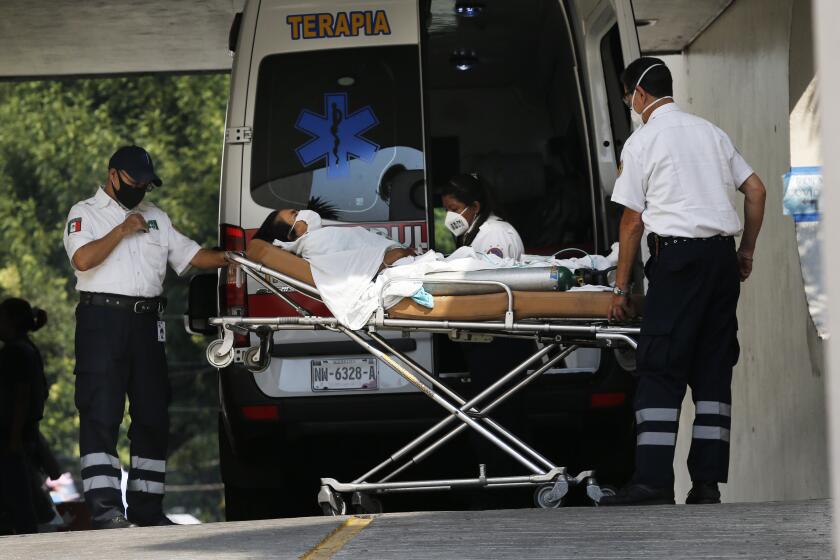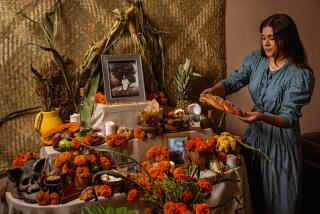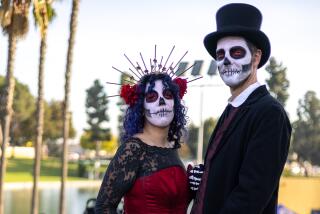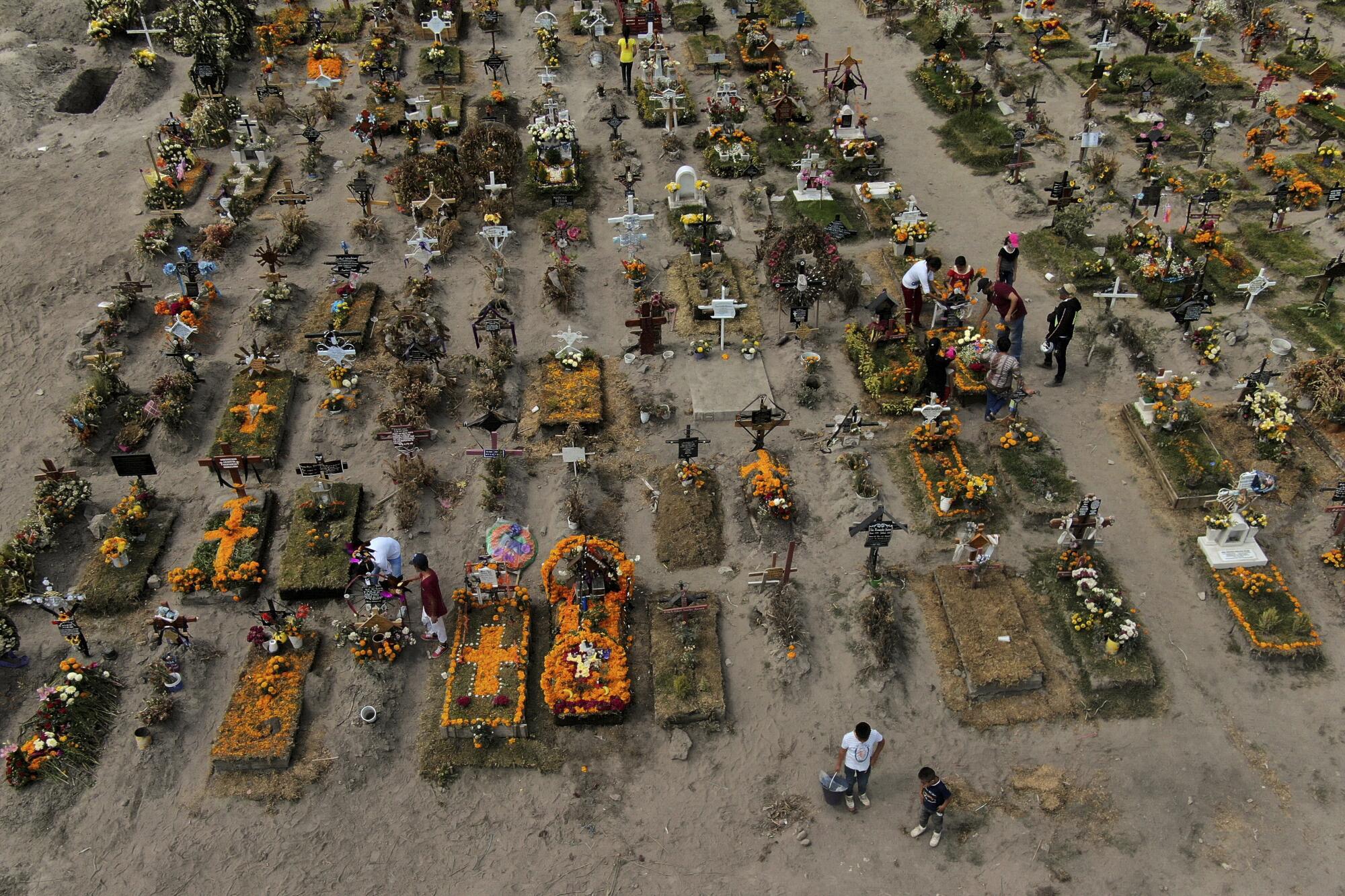
- Share via
MEXICO CITY — He arrived, as he does every year in this season, to adorn the grave of his mother with what were her favorite flowers. He carried a bouquet of red roses and a plastic bag filled with orange petals from the cempasúchil, a marigold profoundly linked in Mexican culture to mourning and remembrance.
The gates of the San Nicolás Tolentino cemetery were closed.
“This virus is truly a tragedy,” said a disheartened Javier Suárez, 68, who had traveled an hour and a half from his home outside the capital only to be denied access to the burial ground. “It kills thousands of people. And it leaves those of us left alive filled with fear. … But now this COVID is destroying our traditions.”
The ongoing pandemic has felled more than 90,000 Mexicans, ranking the country fourth worldwide in the number of coronavirus-related deaths.
It has also achieved another doleful feat: muting one of the country’s signature holidays — Día de los Muertos, or Day of the Dead, when Mexicans honor deceased loved ones in often-boisterous fashion, converging on cemeteries with flowers, candles, food and beverages, and leaving ornate altars in memory of the departed.
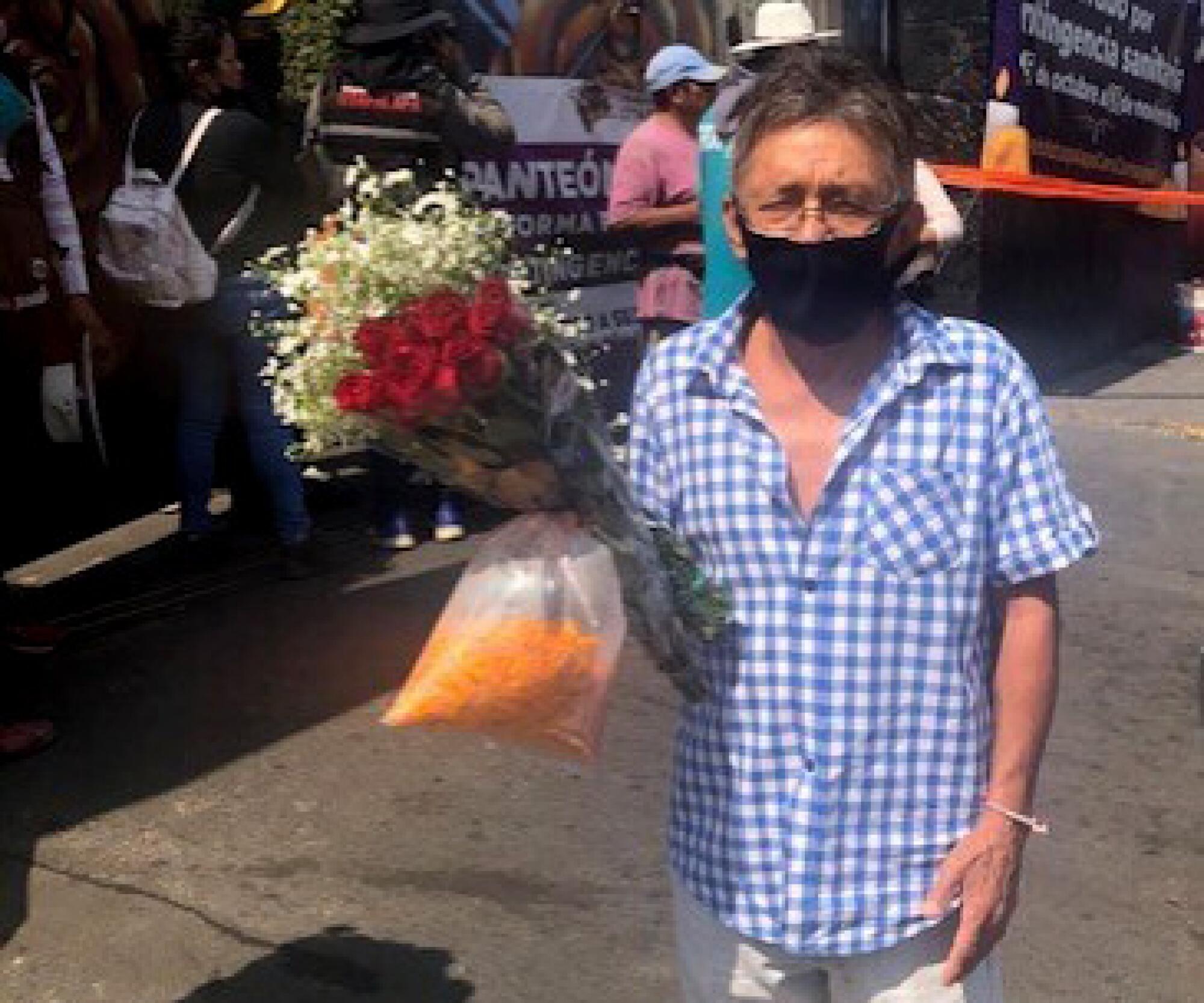
This year, the vibrant amalgam of Christian and pre-Hispanic rites — coinciding with the Roman Catholic holidays of All Saints’ Day and All Souls’ Day on Sunday and Monday — will be a lonesome affair, more private reflection than collective tribute.
Seeking to hinder the spread of the virus, authorities have moved to curb public gatherings. Officials in the capital and elsewhere have banned cemetery visits, dealing a civic and emotional blow to millions of Mexicans. People have been asked to remember their loved ones at home. Some residents managed to get to cemeteries and pay respects before closures began in the last week.
Having heard of the shutdown, Suárez and others decided to venture to gravesites in the days before the official Day of the Dead holiday begins. But many cemeteries were already shut. People were forced to stand outside locked gates, unable to tidy up the graves and festoon them with flowers.
“One comes here with the hope of being able to greet our dear loved ones,” said a disillusioned Suárez. “And now they won’t let us pass.”
He went home, forlorn, with his flowers.
Many in Mexico have noted the harsh paradox: The rites of mourning and remembrance have been quashed in a year when people need them most.
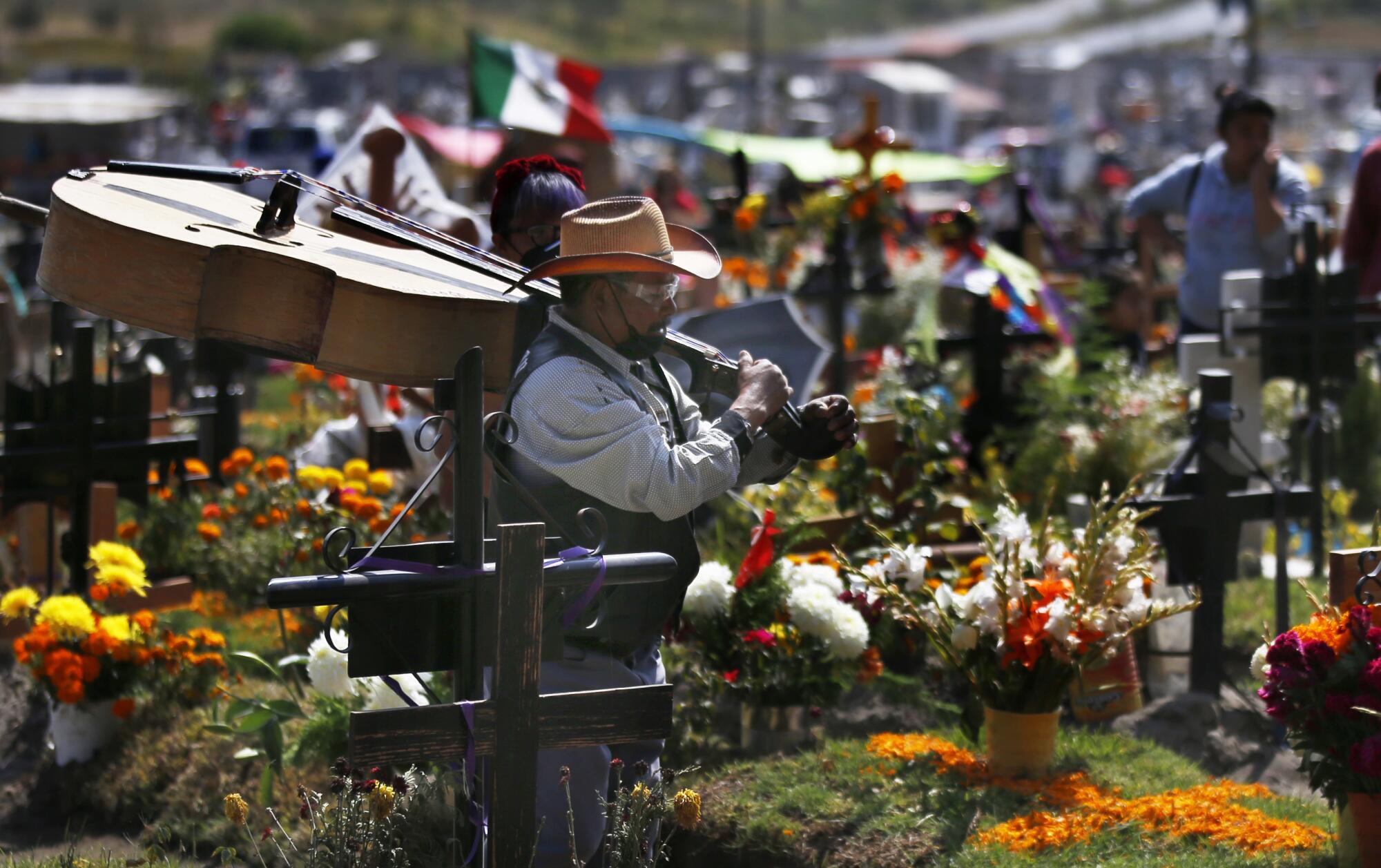
In many cases, health and safety restrictions in hospitals meant that kin were not even allowed to share final moments with gravely ill relatives and friends. Traditional wakes and funerals were also barred. Most victims were cremated as a safety precaution, instead of being interred in traditional burials.
María López Velázquez, 61, a house cleaner in Mexico City, lost her husband in September to what doctors suspect was COVID-19. She is still pained that he was cremated and not buried. She plans to set up a Día de los Muertos altar at home in his honor.
“This ugly disease has come to torment us in so many ways,” she said.

Apart from the emotional toll, the dampened Day of the Dead signals additional economic distress for the millions of Mexicans who rely on street commerce.
The pandemic has already forced thousands out of business, and sales of Day of the Dead paraphernalia this year will probably plunge 70% or more, merchants predict. Markets, shops and roadside kiosks normally do a brisk seasonal business hawking special sweets and flowers and materials for homemade altars, along with the costumes that many young people don in a fusion with Halloween.
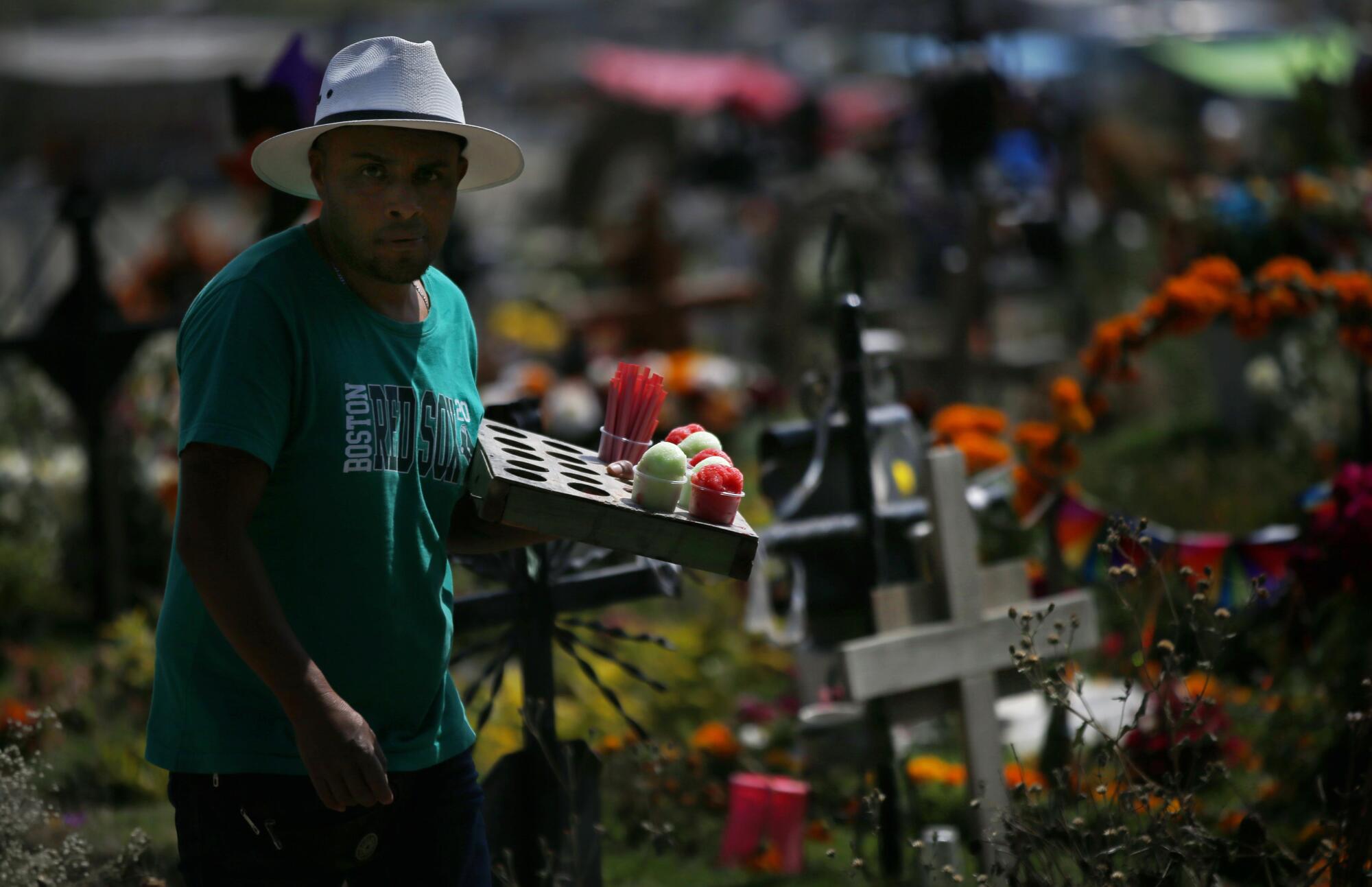
“We are not selling anything right now,” lamented Evangelina Salazar, 73, who runs a flower stand outside the San Lorenzo Tezonco cemetery in the capital along with her husband, Francisco García, 75. “We are dedicated to selling flowers all year, and even if business is weak, we always make it up on the Day of the Dead. But now hardly anyone is buying anything.”
Mexican President Andrés Manuel López Obrador has declared three days of national mourning starting Saturday. for the 90,000-plus cornavirus fatalities. Flags will stand at half-staff.
A Mexican activist group says its analysis of death certificates shows an enormous undercount of coronavirus-related fatalities by the government.
Beyond time-honored rites of closure and the graveside holiday festivities, the pandemic has forced the cancellation of the capital’s annual Day of the Dead parade, which draws hundreds of thousands of revelers to view floats with giant skeletons and other depictions of stylized death, along with dancing troupes and other attractions. The event has been moved to a stadium without spectators and will be available for online viewing. Other performances marking the holiday have also gone virtual, or will be open only to limited audiences.
Last week, authorities removed 50 large sculptured calaveras, or decorative skulls, that had been placed along central Reforma Avenue. The colorful sculptures had been drawing crowds.
“We are taking [the skulls] away so that they don’t become a factor that promotes the contagion,” explained Mexico City Mayor Claudia Sheinbaum.
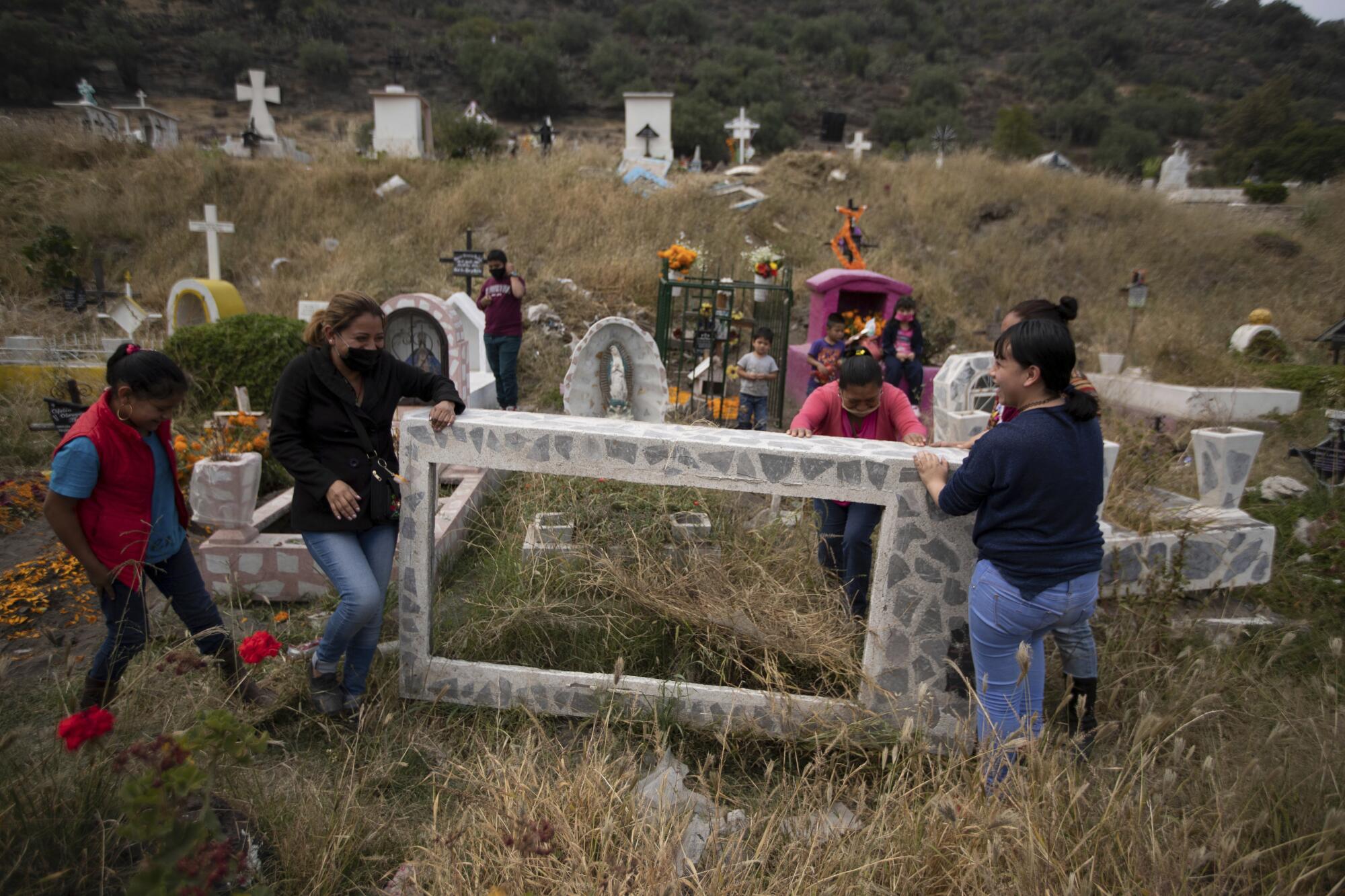
Four days later, the mayor announced that she had tested positive for the virus and had gone into quarantine.
The most dramatic blow is the closing of the cemeteries, the focal point of Day of the Dead.
The day is less a communal lament about death than a kind of celebration of life and of lives past. It signals a spiritual union between the living and dead.
According to tradition, souls of the deceased share moments of intimacy on these days with loved ones who remain. Families bring tamales, pan de muerto (sweet bread) and sugary candy calaveras to gravesites. They tell jokes and recite stories about the deceased. Drinks, both the sweet and alcoholic variety, are consumed and left at tombs.

“I understand about the coronavirus, but how is it possible that we cannot see our dead?” asked Gerardo De Los Angeles Gómez, 52, a plumber who brought flowers to the San Lorenzo Tezonco cemetery, planning to leave them at the graves of his parents. “Our beloved dead come to visit us every year at this time. Who will they have with them this year? Their graves will be abandoned. Without a flower. Without a candle.”
At the San Nicolás Tolentino cemetery, Carmen Chávez, 37, implored that she be allowed in with her daughter, Jennifer, 10, to visit the grave of her husband. He died three years ago in a car crash.
“Please, my daughter was very excited about leaving flowers for her father,” she pleaded with a caretaker. “We won’t be long.”
The caretaker, Juan Rojas, 59, said he could not relent. He, too, appeared devastated. He recalled last year’s festivities.
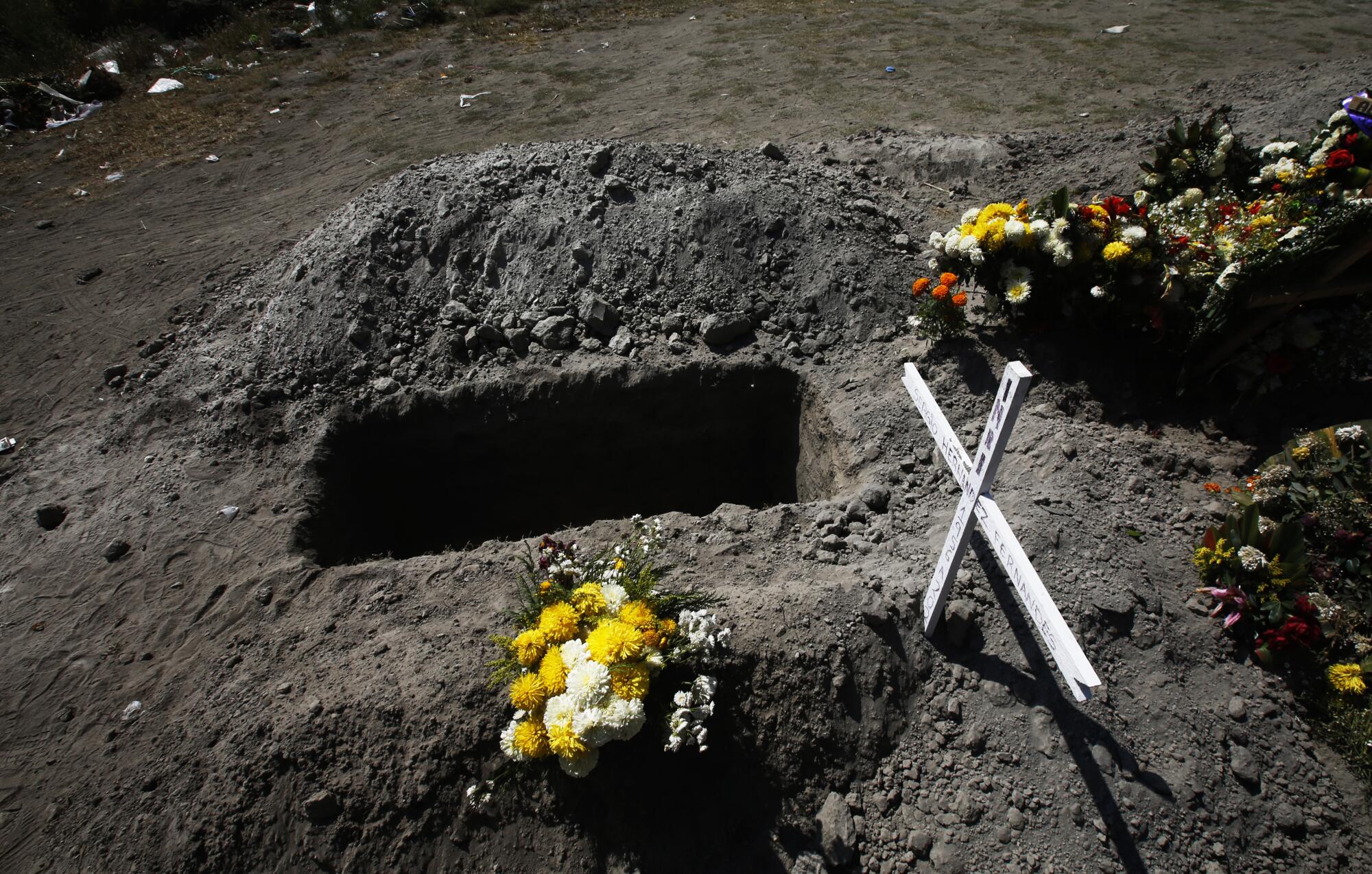
“There were mariachis and norteño bands going from tomb to tomb, singing the favorite songs of the deceased,” Rojas remembered. “The cemetery was full of color with all the flowers that people brought, with the beautiful decorations on the tombs. … It is such a pleasure to see how the people come to be with their departed loved ones.”
Now, he added, “it’s so sad to know that, on this Day of the Dead, all will be abandoned. In silence.”
McDonnell is a Times staff writer and Sánchez is a special correspondent.
More to Read
Sign up for Essential California
The most important California stories and recommendations in your inbox every morning.
You may occasionally receive promotional content from the Los Angeles Times.
